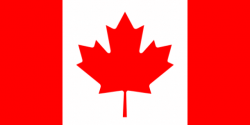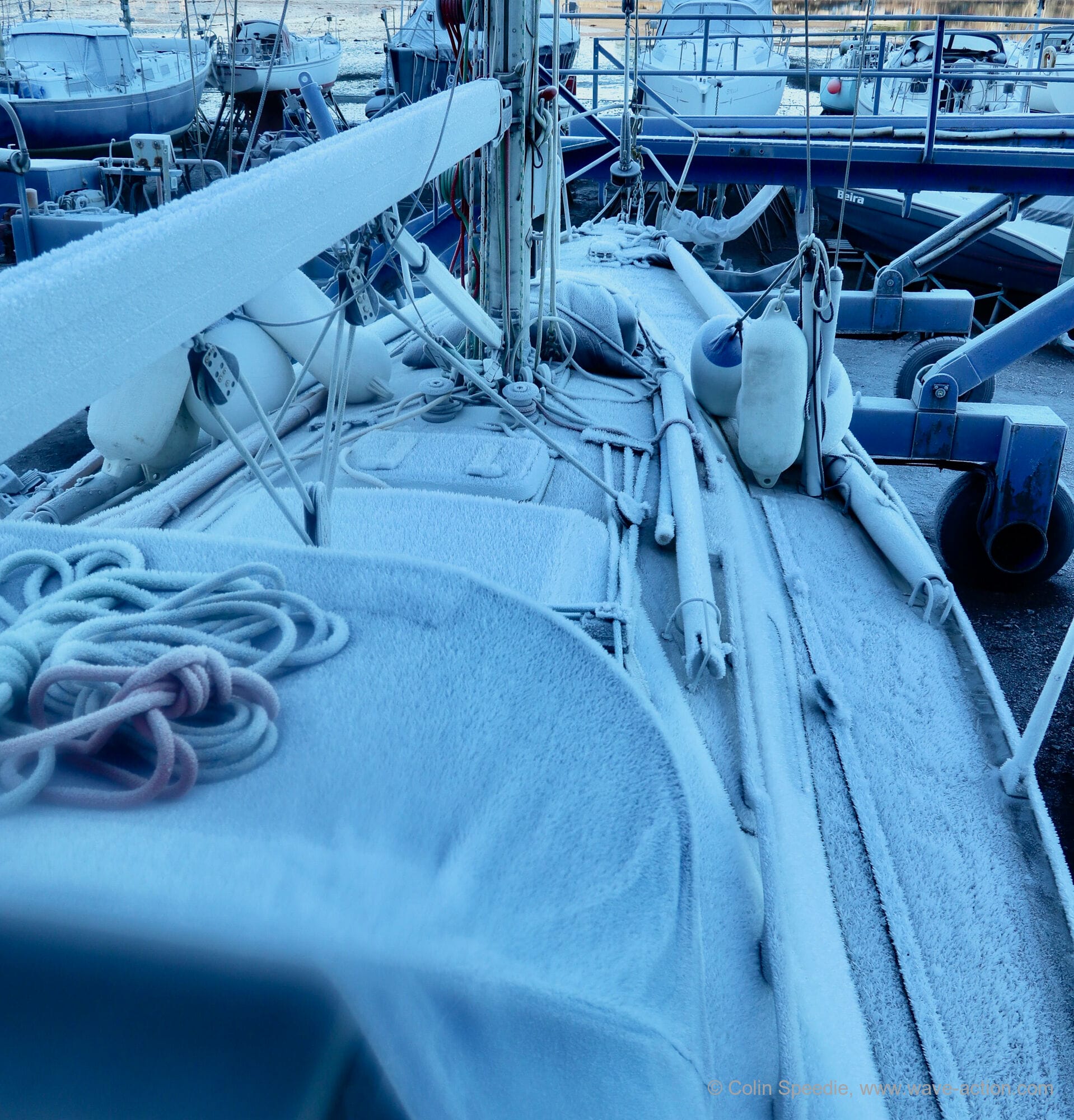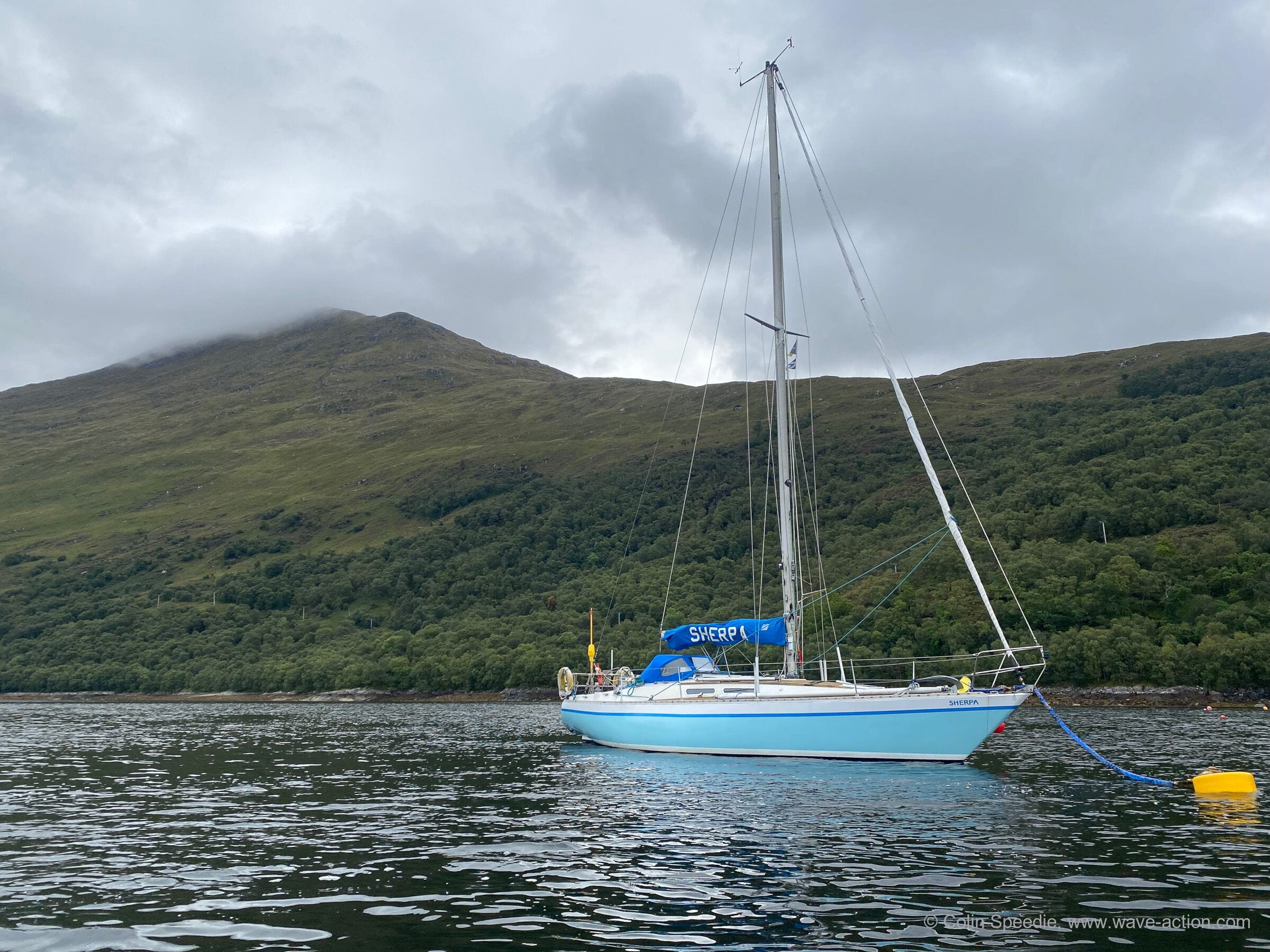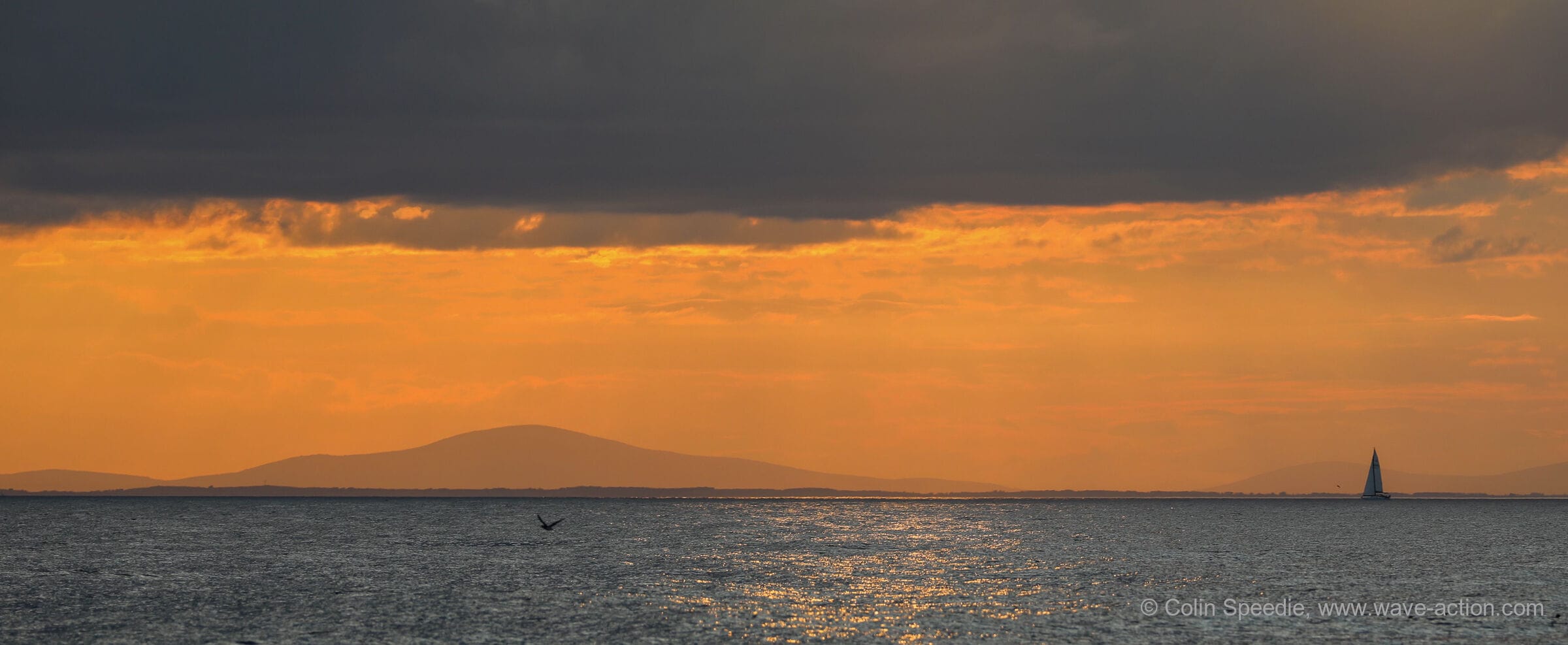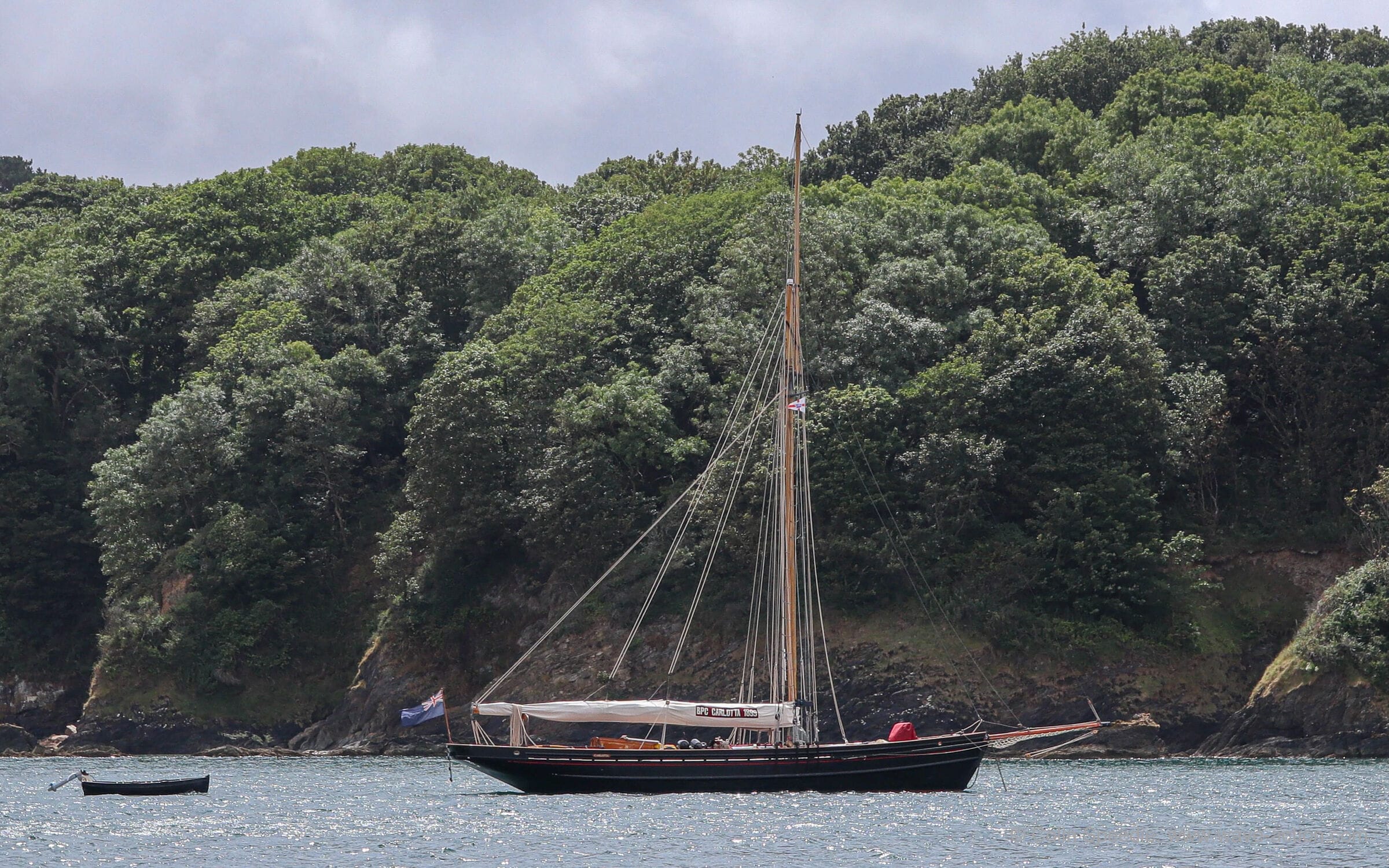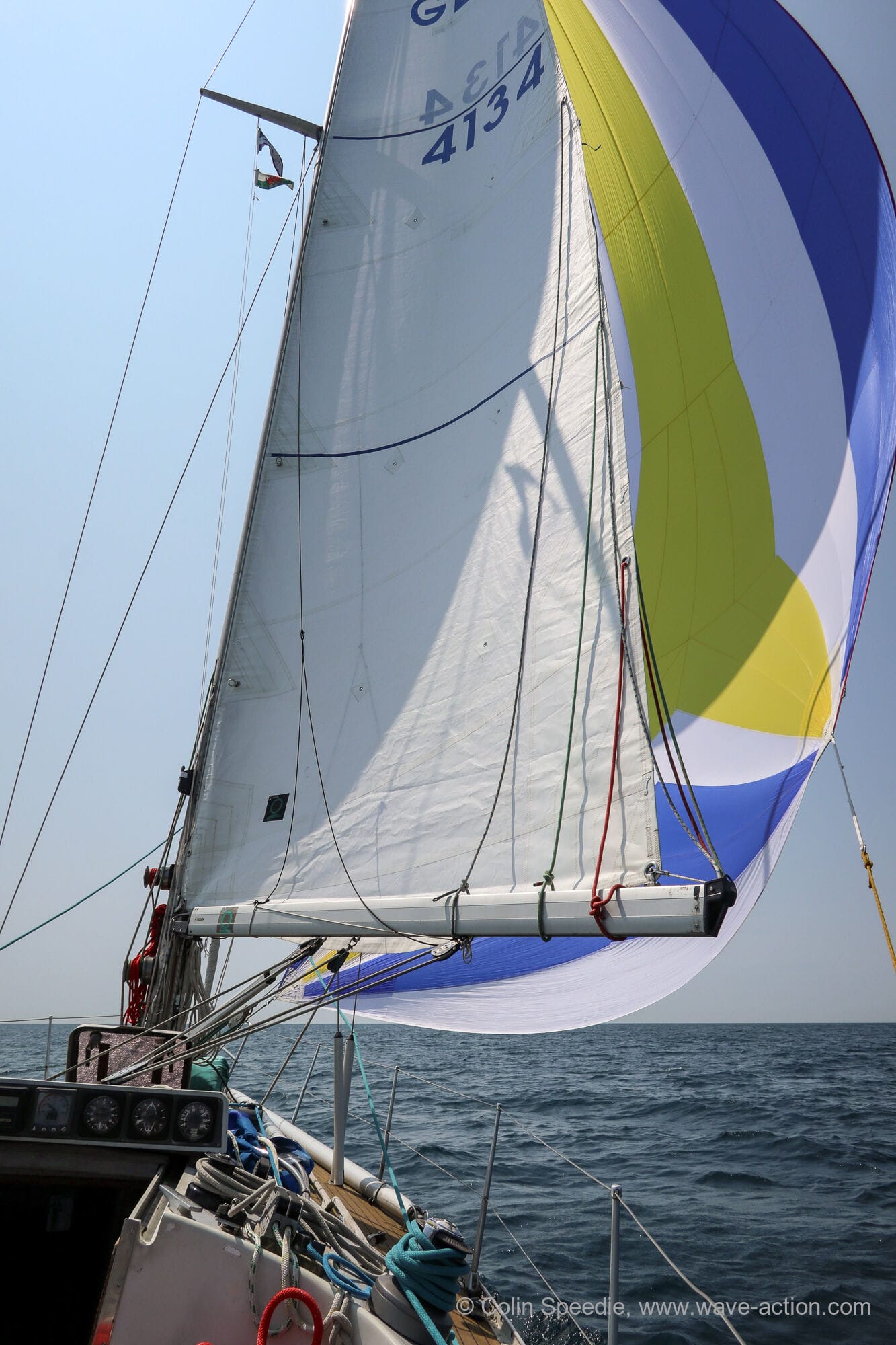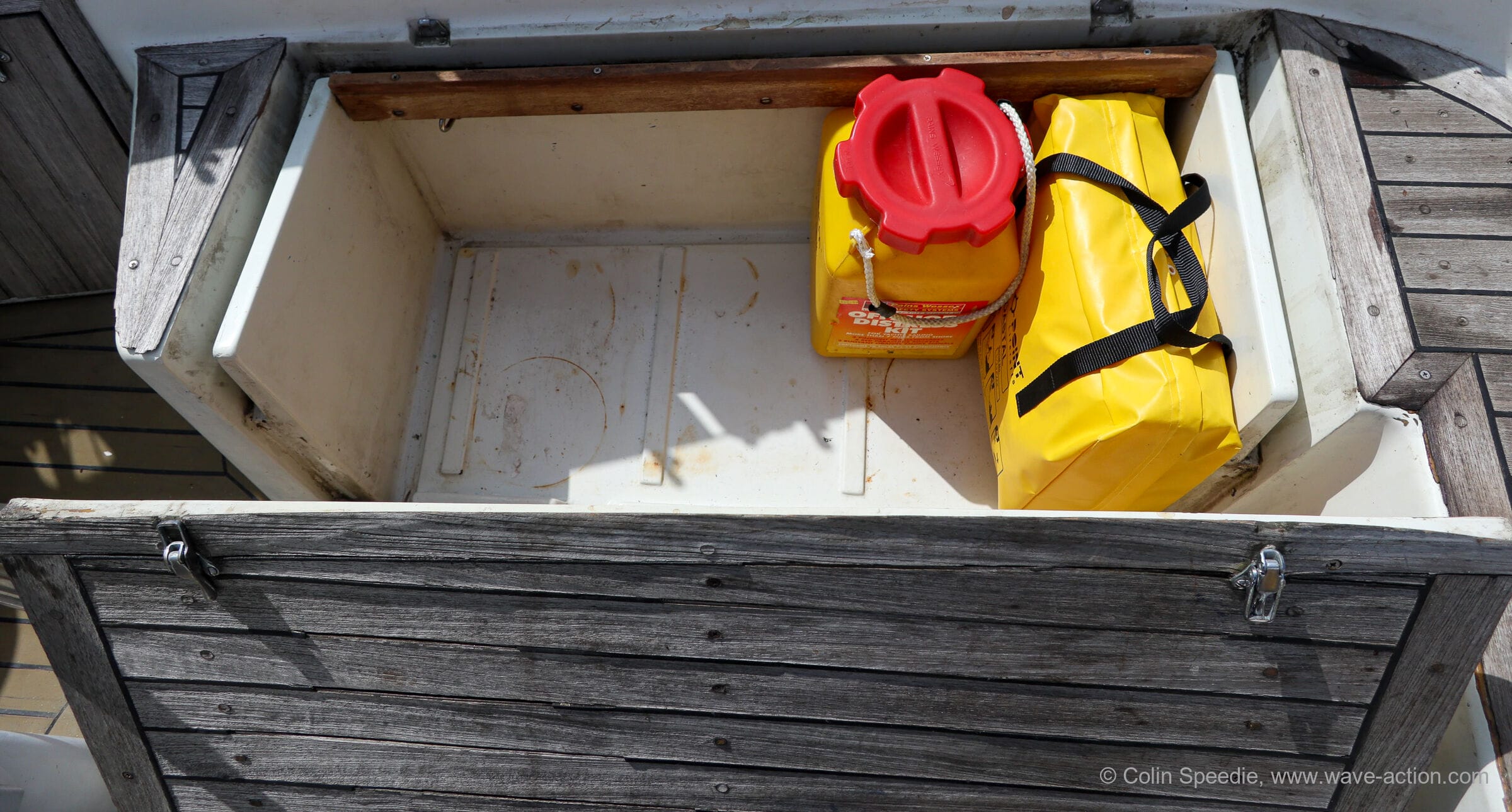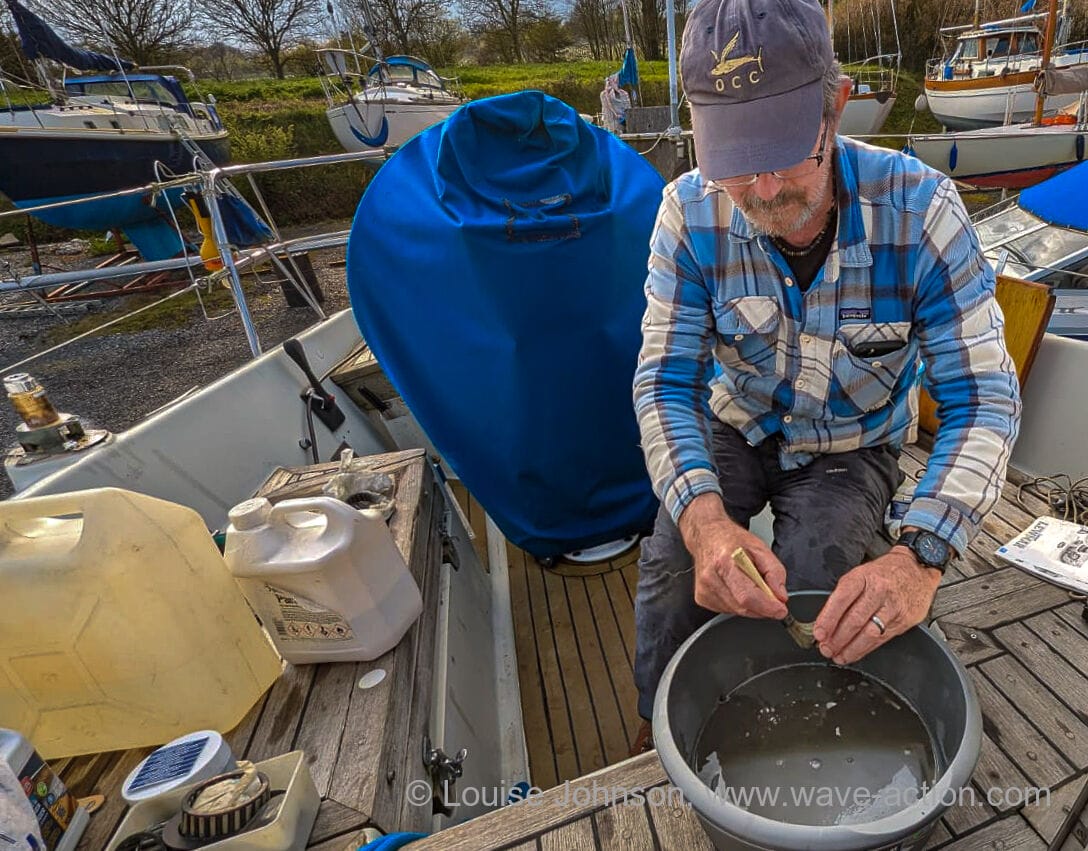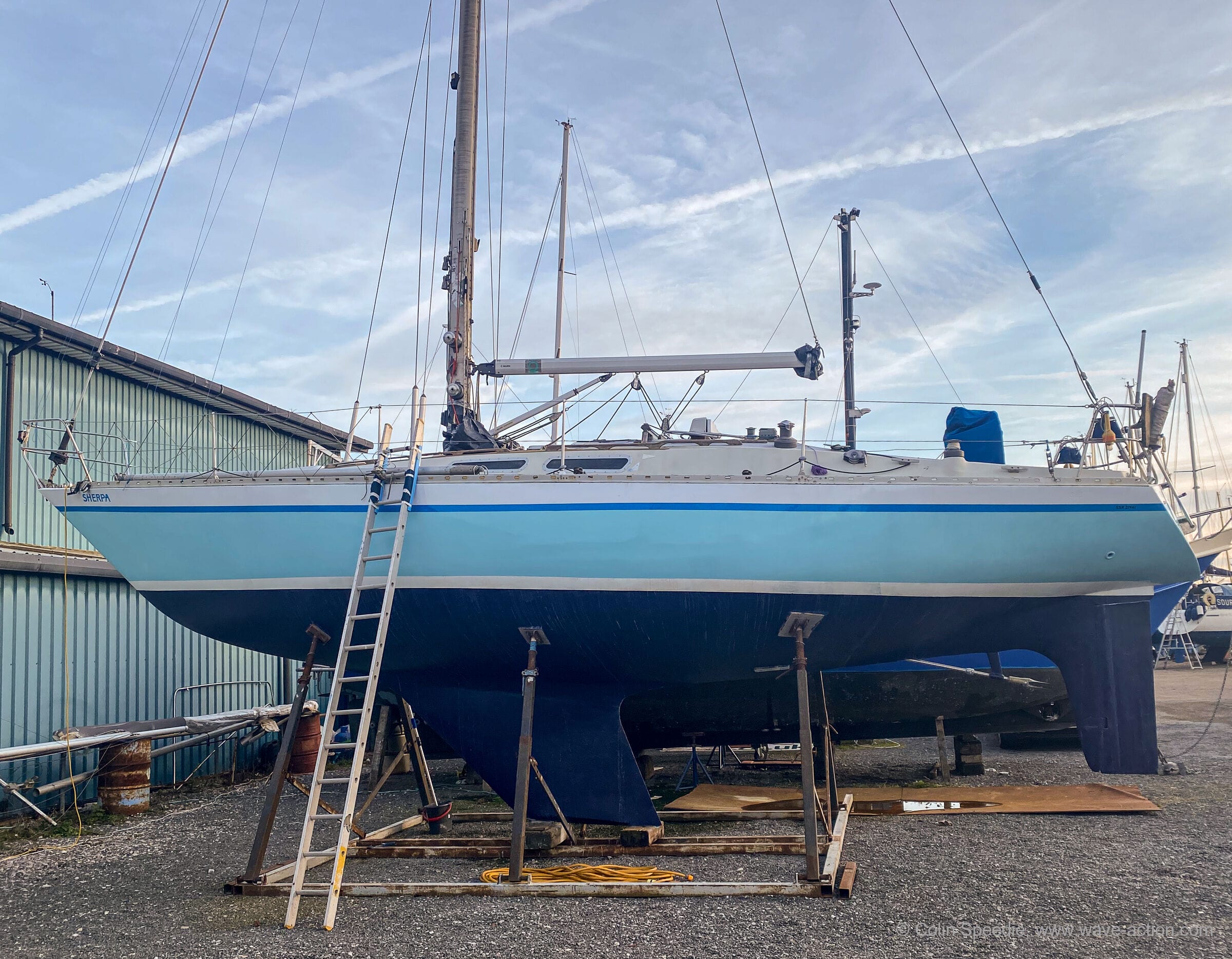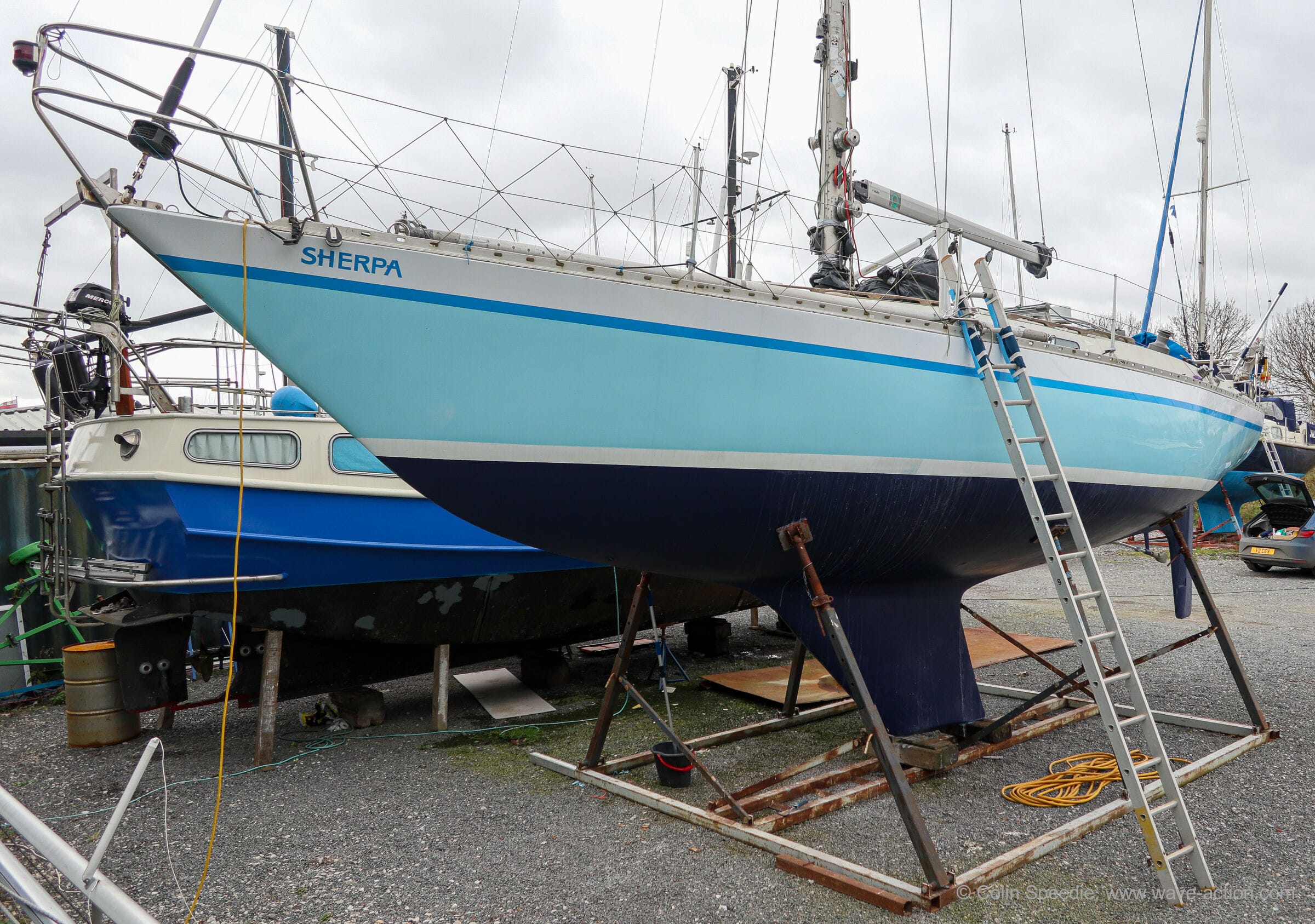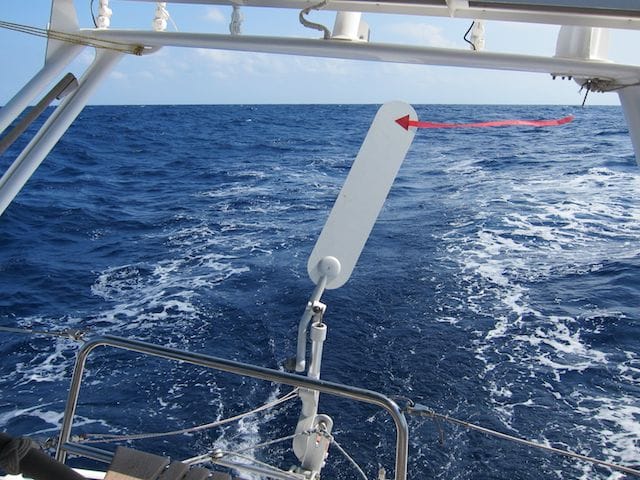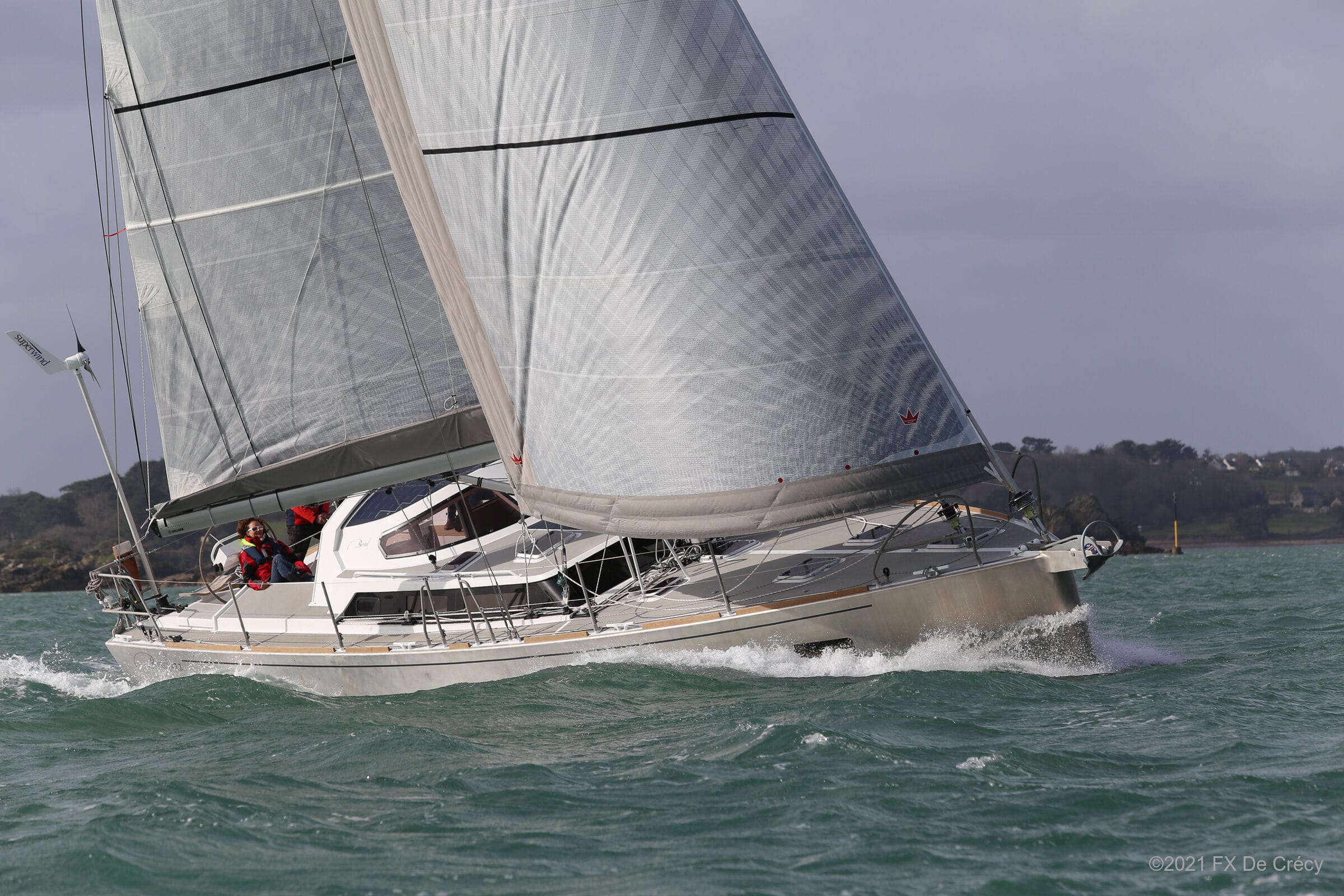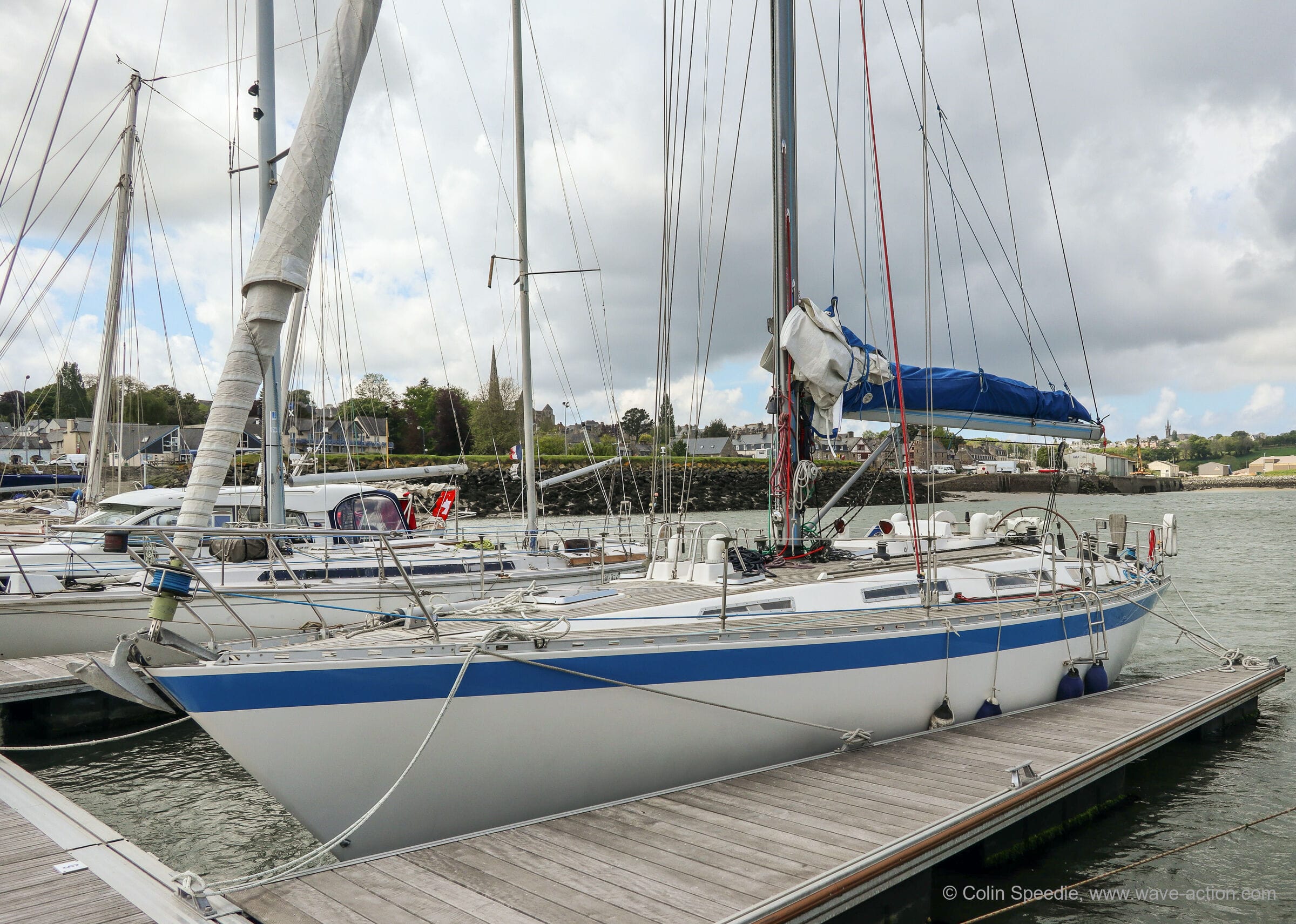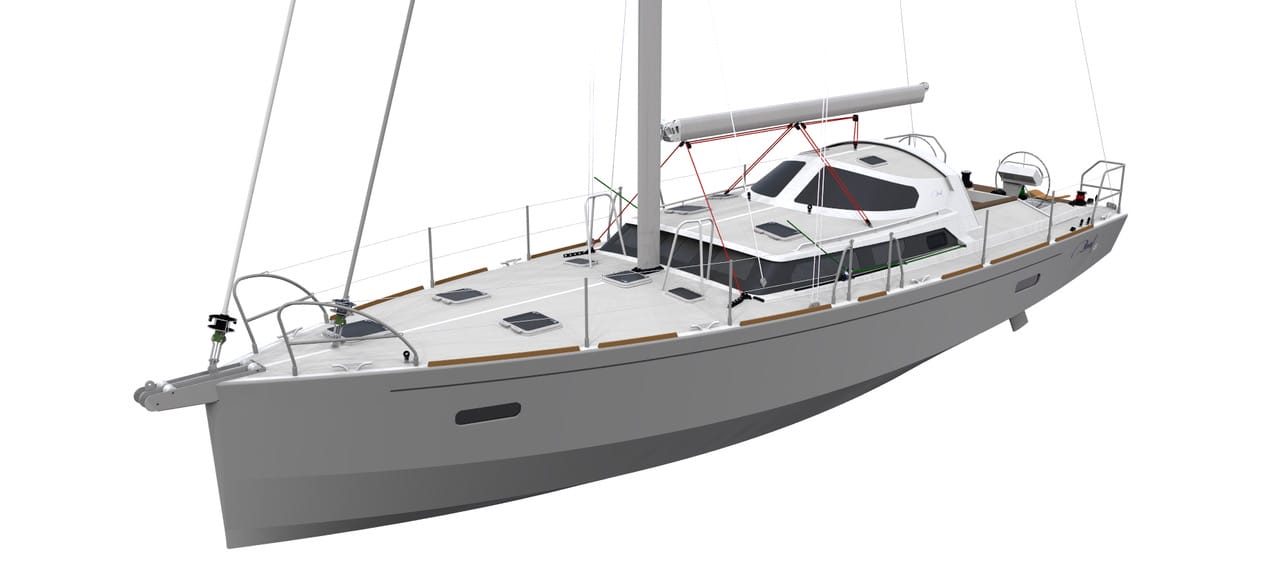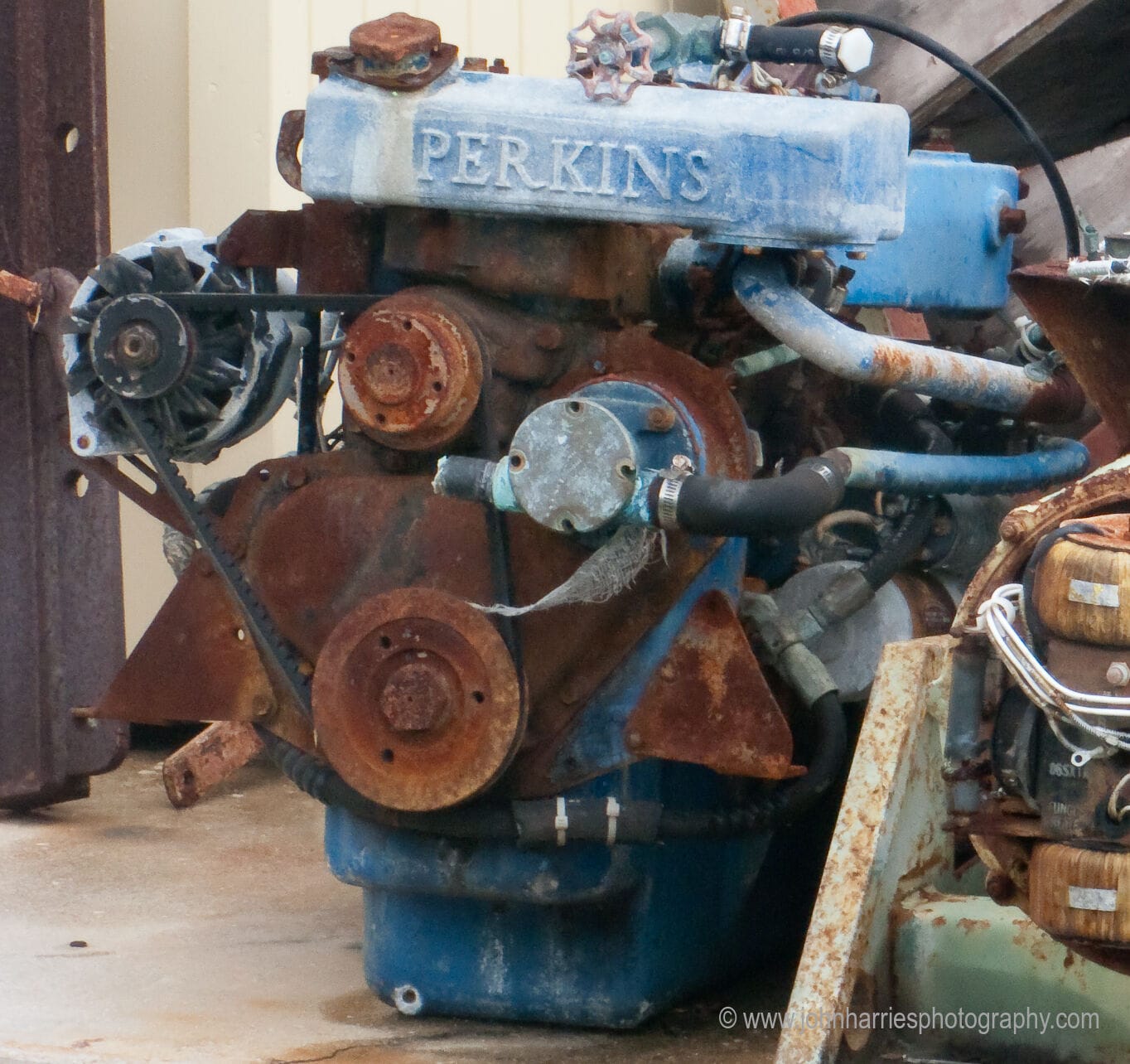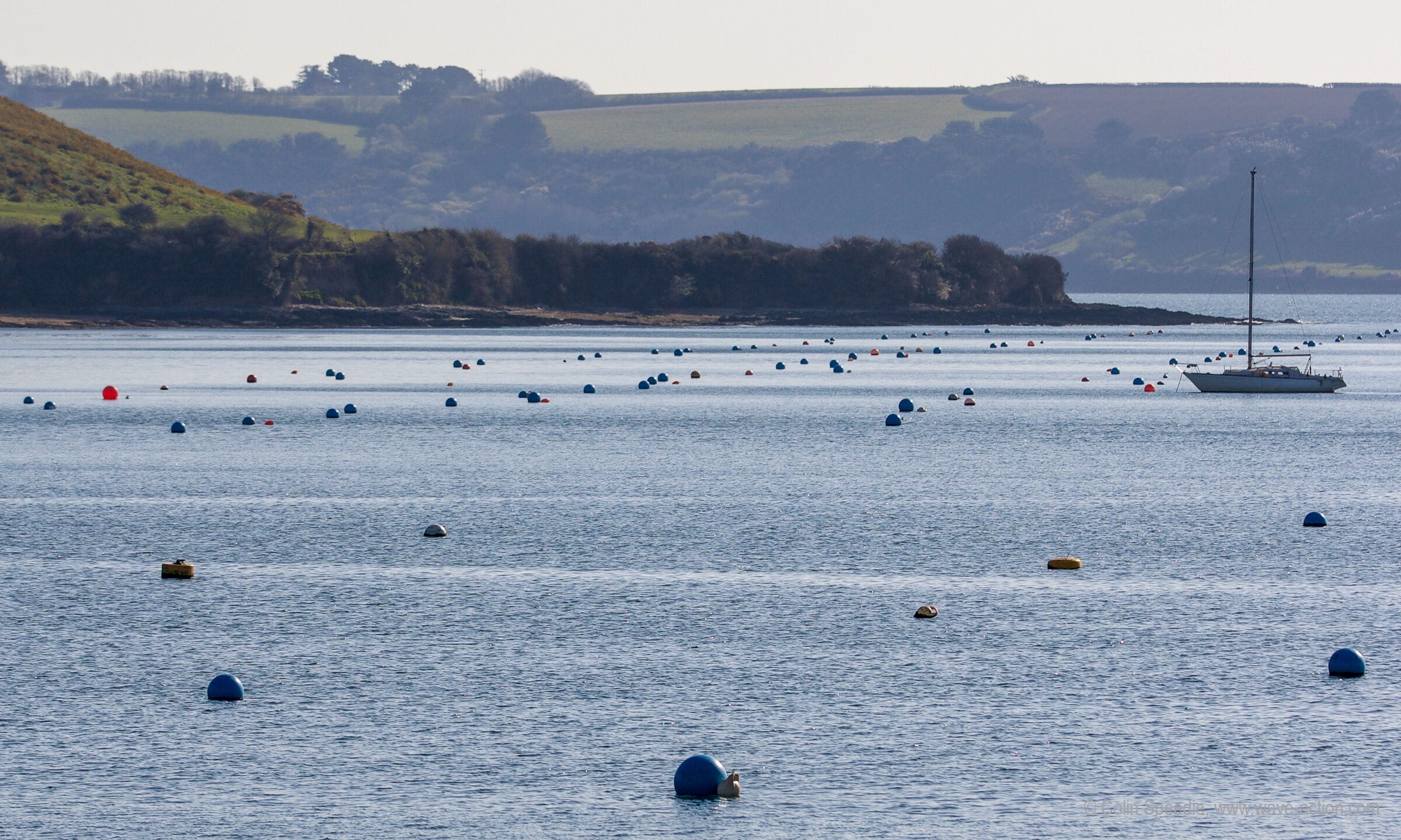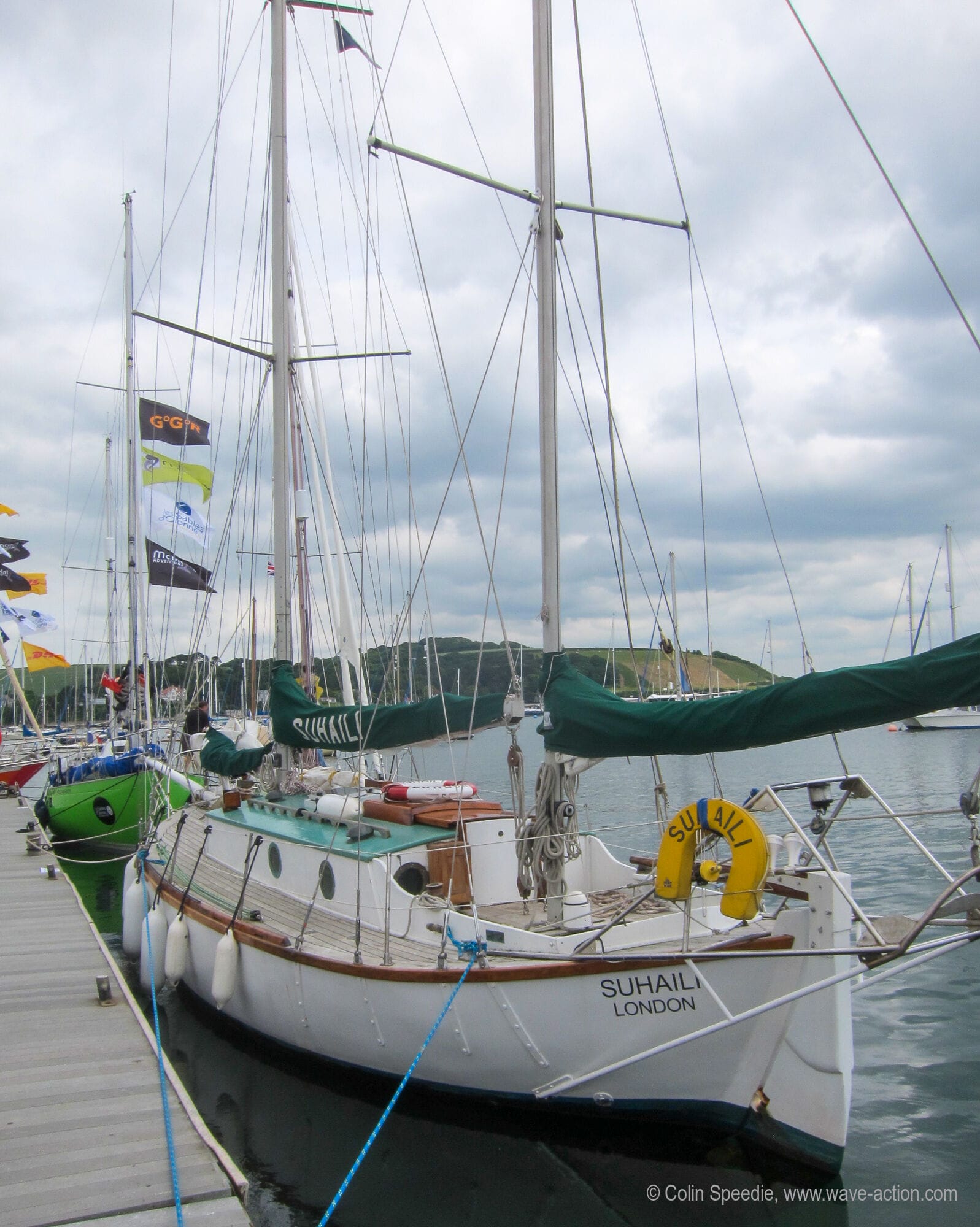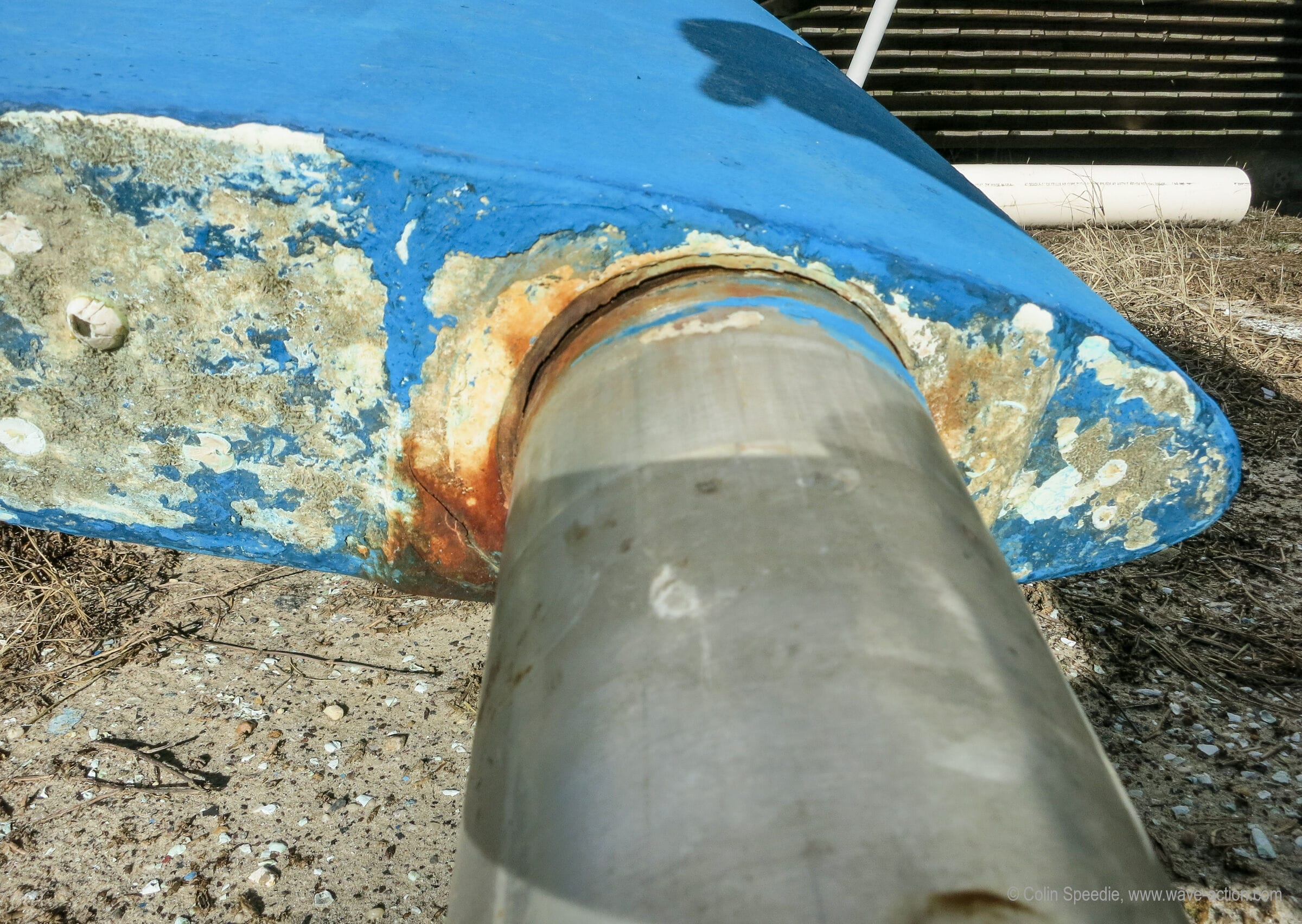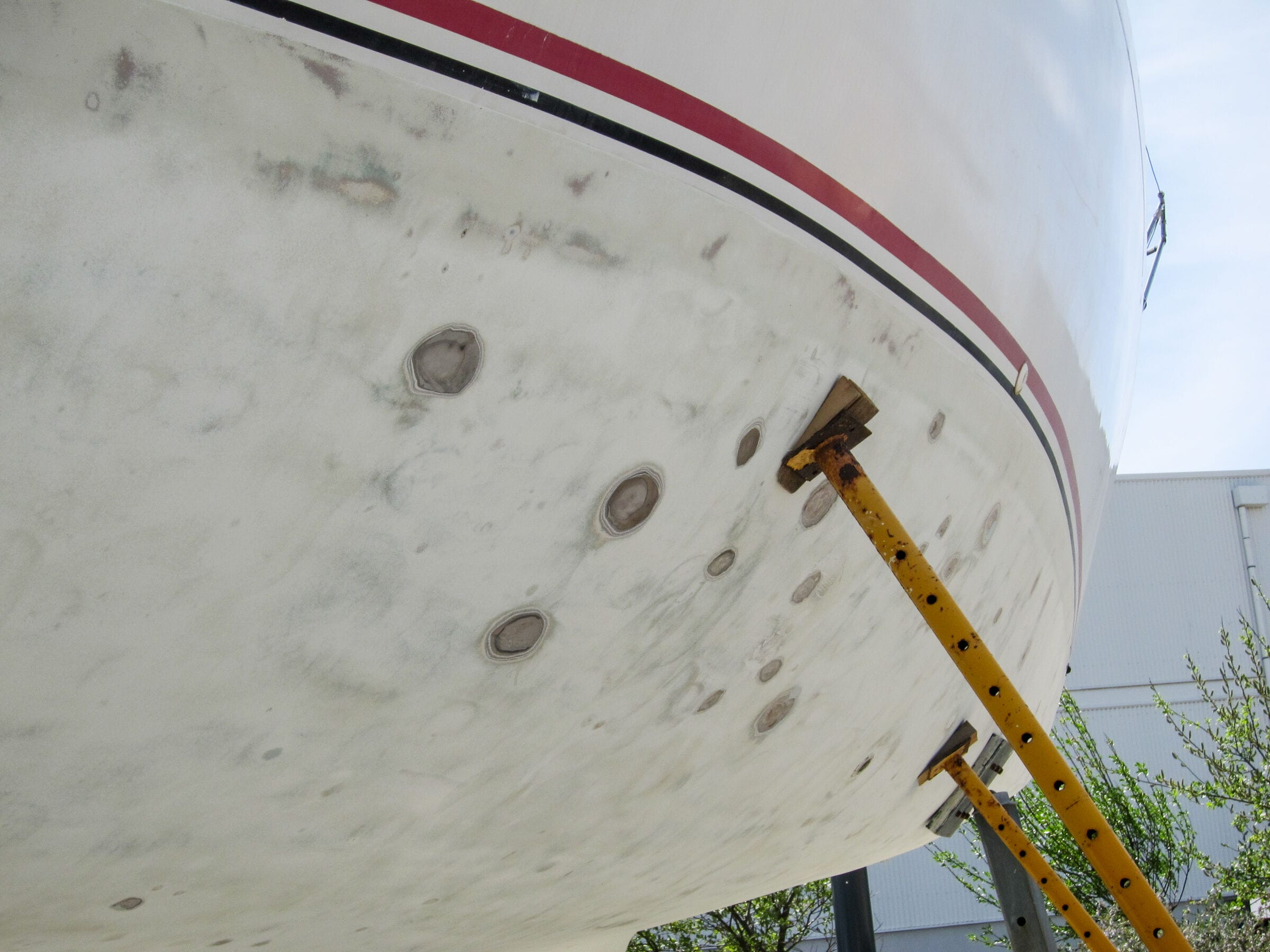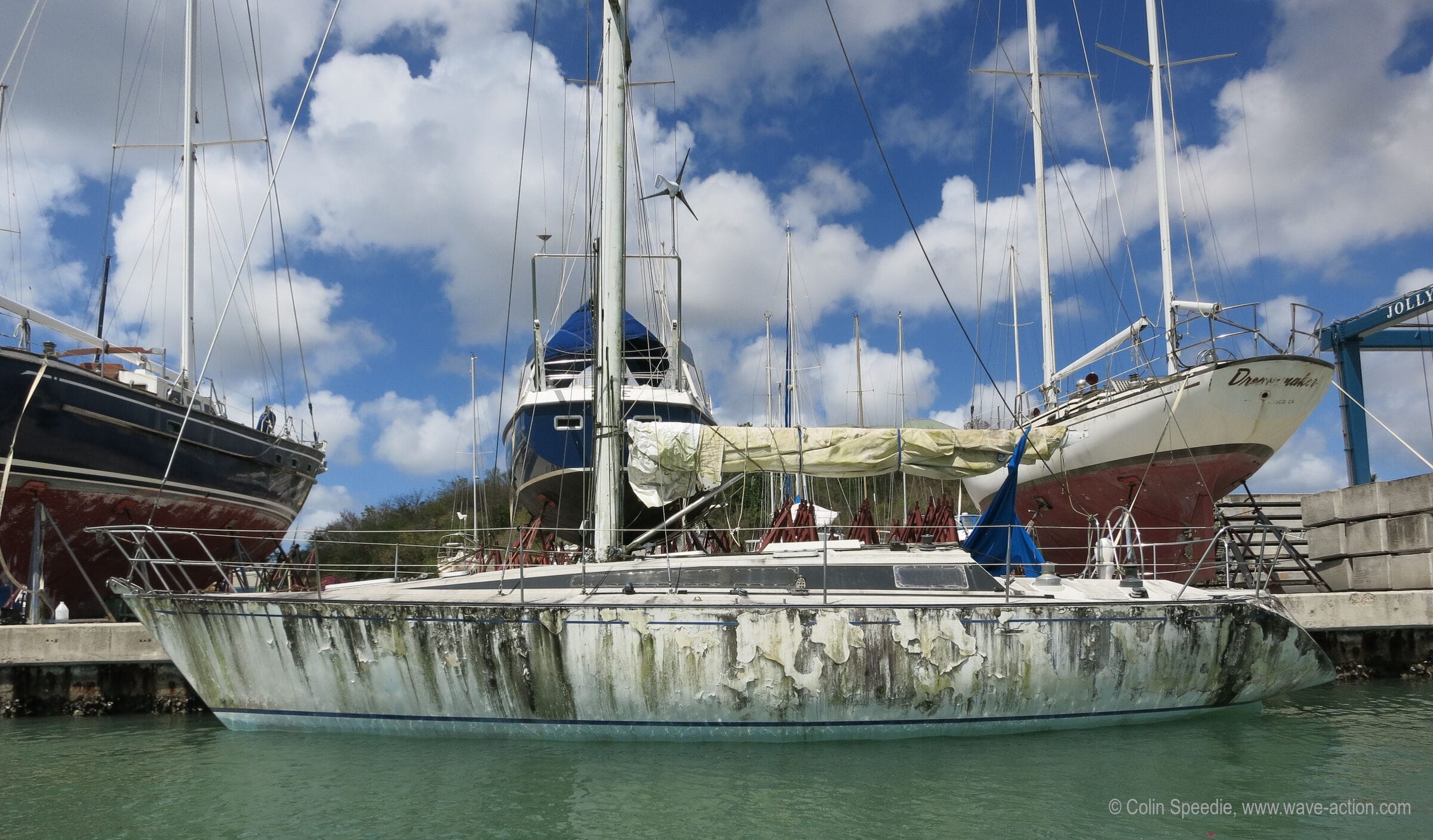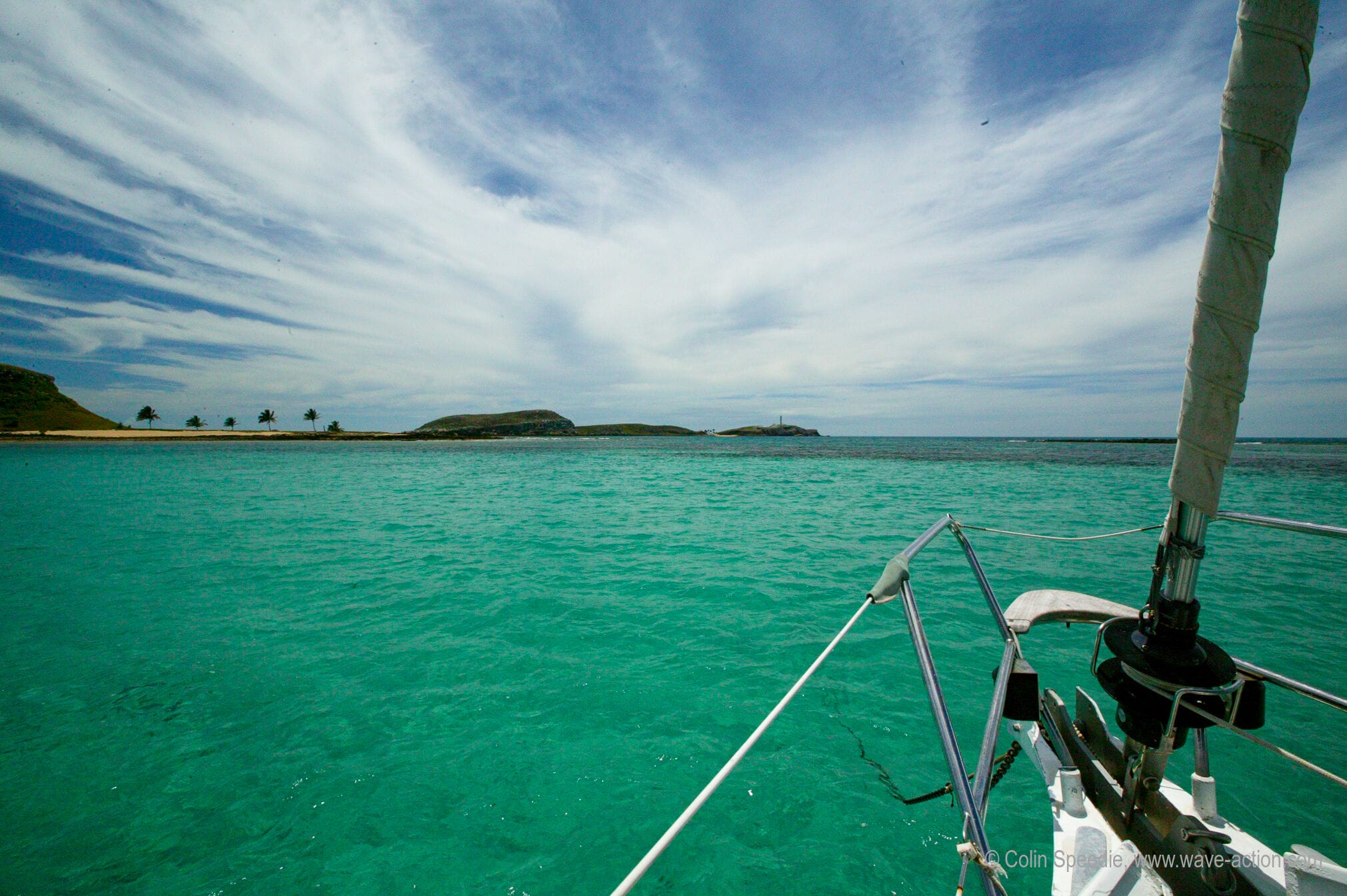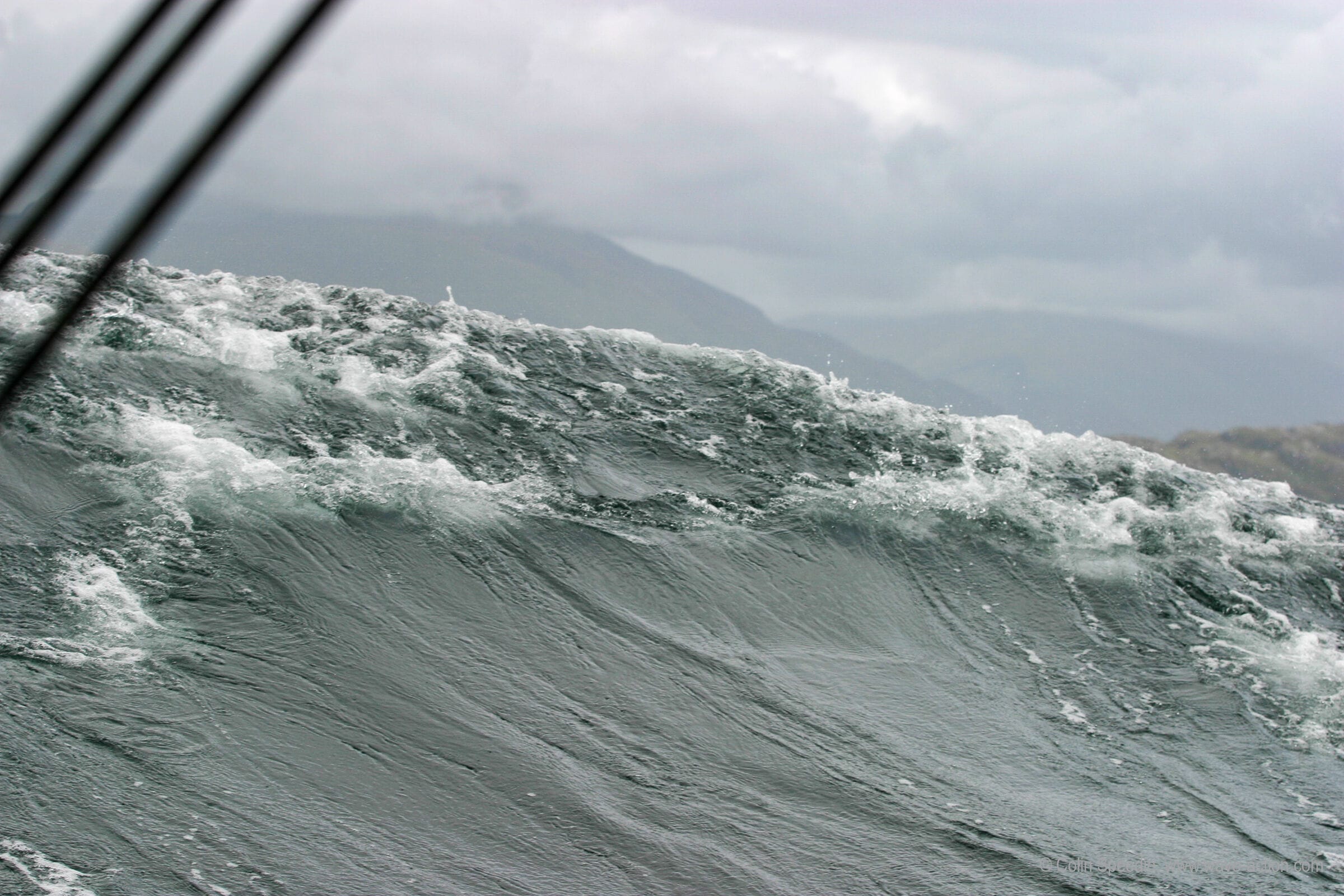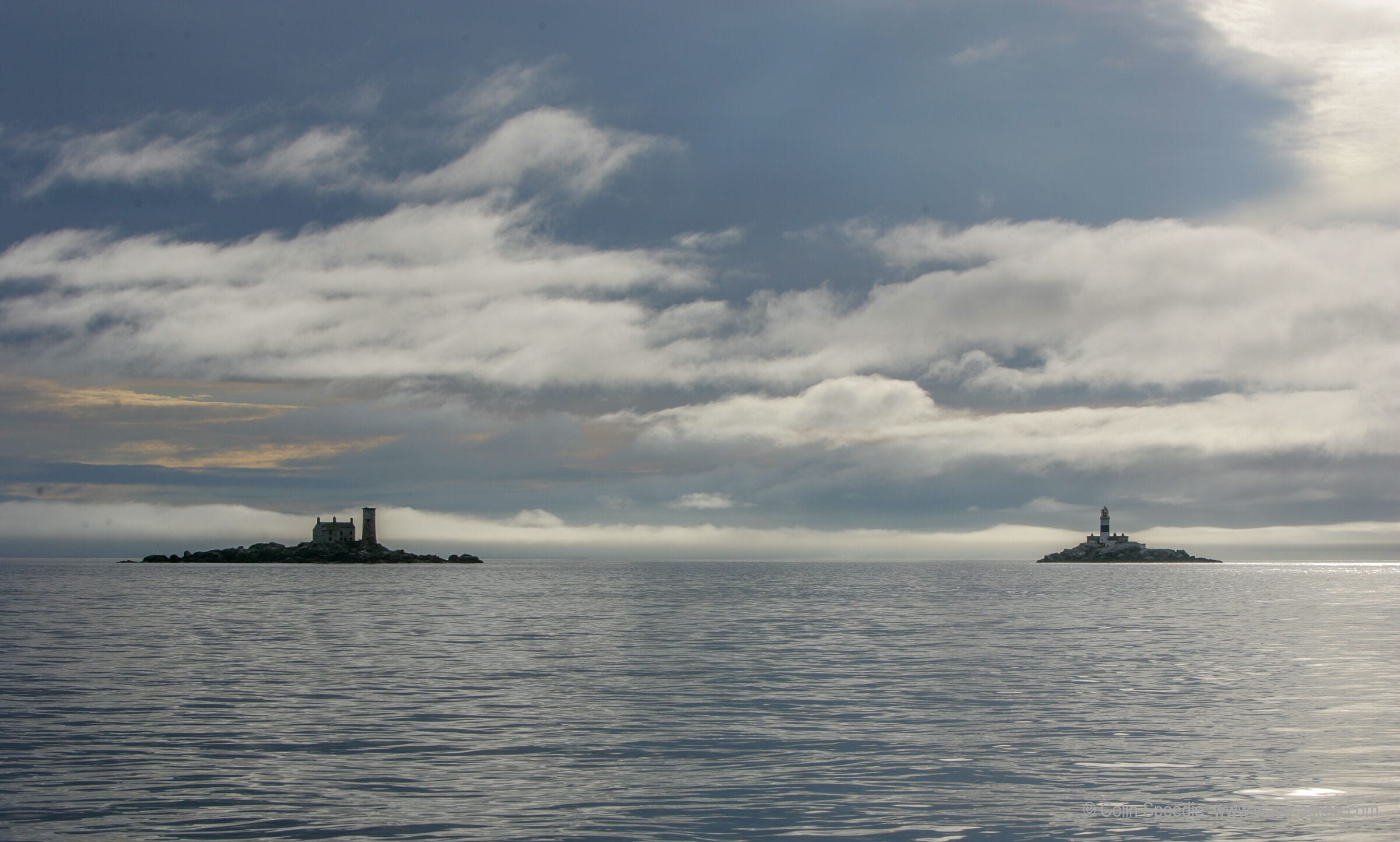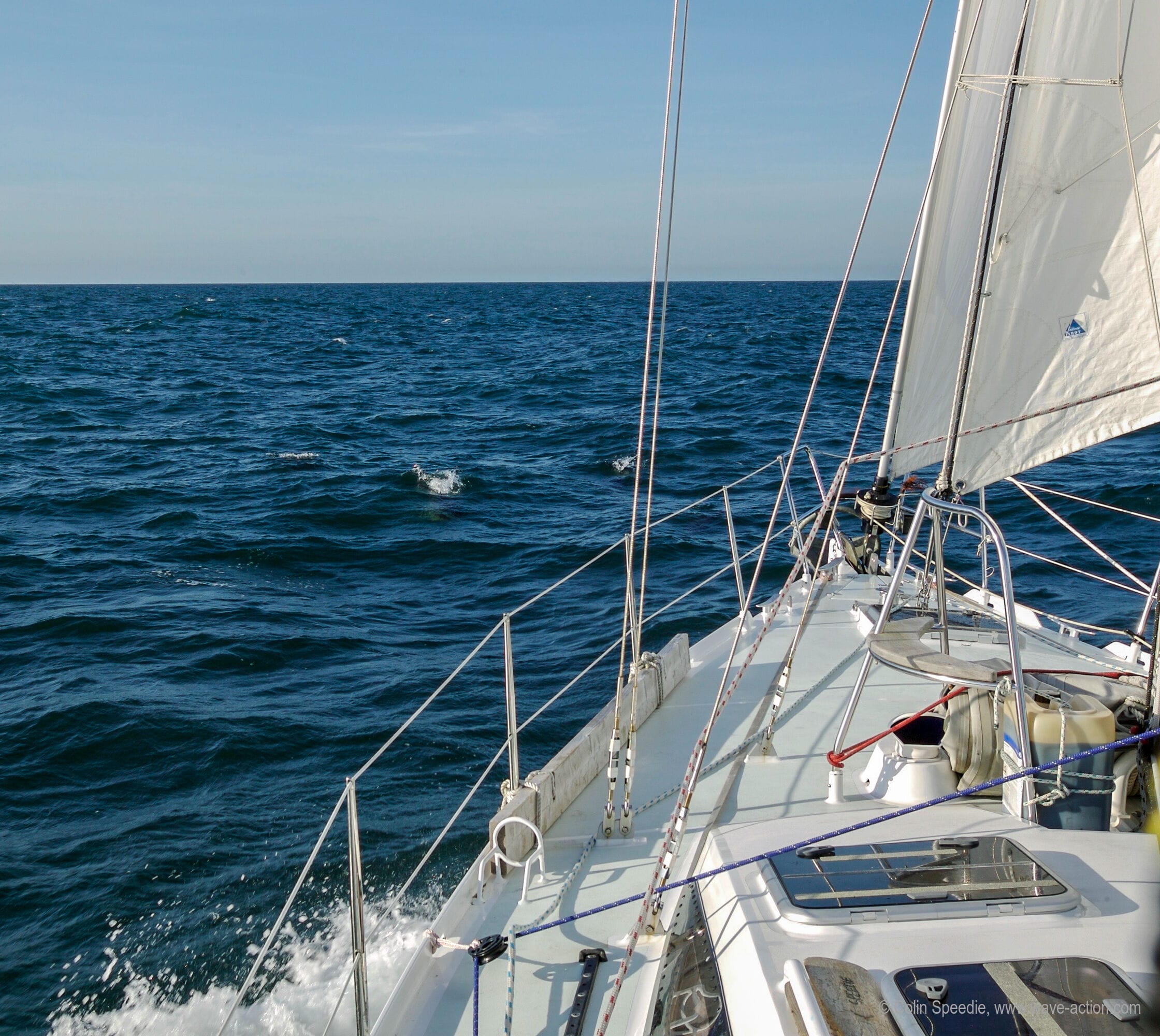-
Rebuilding a Cobra Yacht Steering System—Reassembly
5 CommentsReading Time: 9 minutesMembersRead more: Rebuilding a Cobra Yacht Steering System—ReassemblyIn Part 1 Colin pulled his steering apart and found some frightening defects, now he gets into fixing it right.
-
Rebuilding a Cobra Yacht Steering System—Disassembly and Inspection
11 CommentsReading Time: 11 minutesMembersRead more: Rebuilding a Cobra Yacht Steering System—Disassembly and InspectionThe idea of buying an old boat and going cruising is attractive, but there are also harsh realities to be aware of, like that the steering system is often a ticking time bomb. Not a lot of romance here, but lots of good experience-based advice.
-
The Rolling Refit Continues
13 CommentsReading Time: 8 minutesMembersRead more: The Rolling Refit ContinuesColin continues the story of bringing a fundamental sound, but 47 year old, racing boat back to offshore standards and turning her into a comfortable, fast and safe cruising boat, all while Scotland’s winter winds howl.
-
Yes, You Can Have an Offshore Sailboat For Less Than $US100,000
33 CommentsReading Time: 10 minutesMembersRead more: Yes, You Can Have an Offshore Sailboat For Less Than $US100,000Some years ago Colin and John explored whether or not a seamanlike offshore boat could be had for less than US$100,000. Colin and Louise have just proved we can, but there are things to know.
-
Sailing a New-To-Us Boat Home—What Could Go Wrong?
26 CommentsReading Time: 11 minutesMembersRead more: Sailing a New-To-Us Boat Home—What Could Go Wrong?Colin and Louise serve up a master class on delivering an older and long-unsailed boat through difficult waters and adverse weather, and even have fun doing it.
-
Falmouth For Orders
17 CommentsReading Time: 8 minutesMembersRead more: Falmouth For OrdersColin is waiting for the weather, as happens to all cruisers, and muses on the history of an iconic port, boat design (old and new), derelict boats, and the ongoing process of getting in tune with their new-to-them She 36.
-
To Sea At Last
15 CommentsReading Time: 9 minutesMembersRead more: To Sea At LastAfter many hours of toil in the boatyard to make her passage-ready, Colin and Louise start the long passage home to Scotland, testing the boat and gear as they go.
-
Safety Inspection and Gear For a New-To-Us Boat
21 CommentsReading Time: 8 minutesMembersRead more: Safety Inspection and Gear For a New-To-Us BoatColin shares his safety checks and upgrades made before the long delivery passage home to Scotland.
-
Starting With The Basics On A New-To-Us Cruising Boat
28 CommentsReading Time: 9 minutesMembersRead more: Starting With The Basics On A New-To-Us Cruising BoatColin continues the story of making a basically sound, but nearly half-a-century-old, boat ready for sailing. Vital reading for anyone buying a used boat.
-
Finding and Buying a Dream
22 CommentsReading Time: 10 minutesMembersRead more: Finding and Buying a DreamNow Colin and Louise have found and bought their new boat, the real work begins…but they got the basics right. Here’s how.
-
Colin and Louise Have a New Boat
74 CommentsReading Time: 7 minutesMembersRead more: Colin and Louise Have a New BoatAfter two years of diligent searching, one of the most knowledgeable boat buyers anywhere has selected his next offshore cruising boat, and an attainable one, too.
-
11 Self-Steering Vane Gear Installation and Usage Tips
38 CommentsReading Time: 7 minutesMembersRead more: 11 Self-Steering Vane Gear Installation and Usage TipsSelf steering windvanes have a reputation of being hard to use. Reading these tips can fix that and make us love our windvane.
-
Test Sail and Review of The Boréal 47.2
73 CommentsReading Time: 11 minutesMembersRead more: Test Sail and Review of The Boréal 47.2Colin sails the newest model from Boréal, builders of ocean-going cruising sailing yachts.
-
Colin & Louise are Buying a New Sailboat
44 CommentsReading Time: 8 minutesFreeRead more: Colin & Louise are Buying a New SailboatWe can all learn a huge amount when two of the most experienced sailboat owners anywhere go boat shopping.
-
Two New Designs From Boréal
44 CommentsReading Time: 8 minutesMembersRead more: Two New Designs From BoréalFifteen years after launching the first 44, Boréal have revealed their Mk2 version of this award winning design together with a 47 foot extended cockpit version. Colin tells us all about the changes and improvements.
-
Planning and Budgeting an Engine Rebuild or Replacement
98 CommentsReading Time: 13 minutesMembersRead more: Planning and Budgeting an Engine Rebuild or ReplacementThere are few things more depressing in cruising than having to live with an unreliable engine. Colin takes a look at the options for rebuild or repower and what all this is going to cost.
-
April Fools?
21 CommentsReading Time: 9 minutesFreeRead more: April Fools?Colin is using his enforced time ashore to think about the greater cruising community and what the future may hold for us all.
-
A Sail Away Offshore Cruising Boat For Less Than US$100,000—Best Hull Material
43 CommentsReading Time: 9 minutesMembersRead more: A Sail Away Offshore Cruising Boat For Less Than US$100,000—Best Hull MaterialColin completes his four-part series on going offshore cruising in a boat for less than US$100,000, with a look at materials other than fibreglass, and then winds up on a positive note.
-
A Sail Away Offshore Cruising Boat For Less Than US$100,000—Rudders and Keels
55 CommentsReading Time: 7 minutesMembersRead more: A Sail Away Offshore Cruising Boat For Less Than US$100,000—Rudders and KeelsMany secondhand boats out there are being sold as ready to go offshore. But what about the vital underwater appendages the loss of which often results in abandonment or worse? Colin shines the bright light of reality on this vital subject that no one else likes to talk about.
-
A Sail Away Offshore Cruising Boat For Less Than US$100,000—Decks, Hulls and SS Fittings
57 CommentsReading Time: 12 minutesMembersRead more: A Sail Away Offshore Cruising Boat For Less Than US$100,000—Decks, Hulls and SS FittingsSo now that we have decided to focus on boats that have been well taken care of and not butchered by inept amateurs, we still need to be realistic about potential flaws in materials and construction and what it would really take in time and money to fix each. We can have no better guide than Colin as we figure that out. To that end, Colin turns his attention to seven basic construction areas where problems can…
-
A Sail Away Offshore Cruising Boat For Less Than US$100,000—Introduction
57 CommentsReading Time: 8 minutesMembersRead more: A Sail Away Offshore Cruising Boat For Less Than US$100,000—IntroductionBefore we even start a refit we must think about our own skills and a place to work. Then it’s time to move on to buying the boat.
